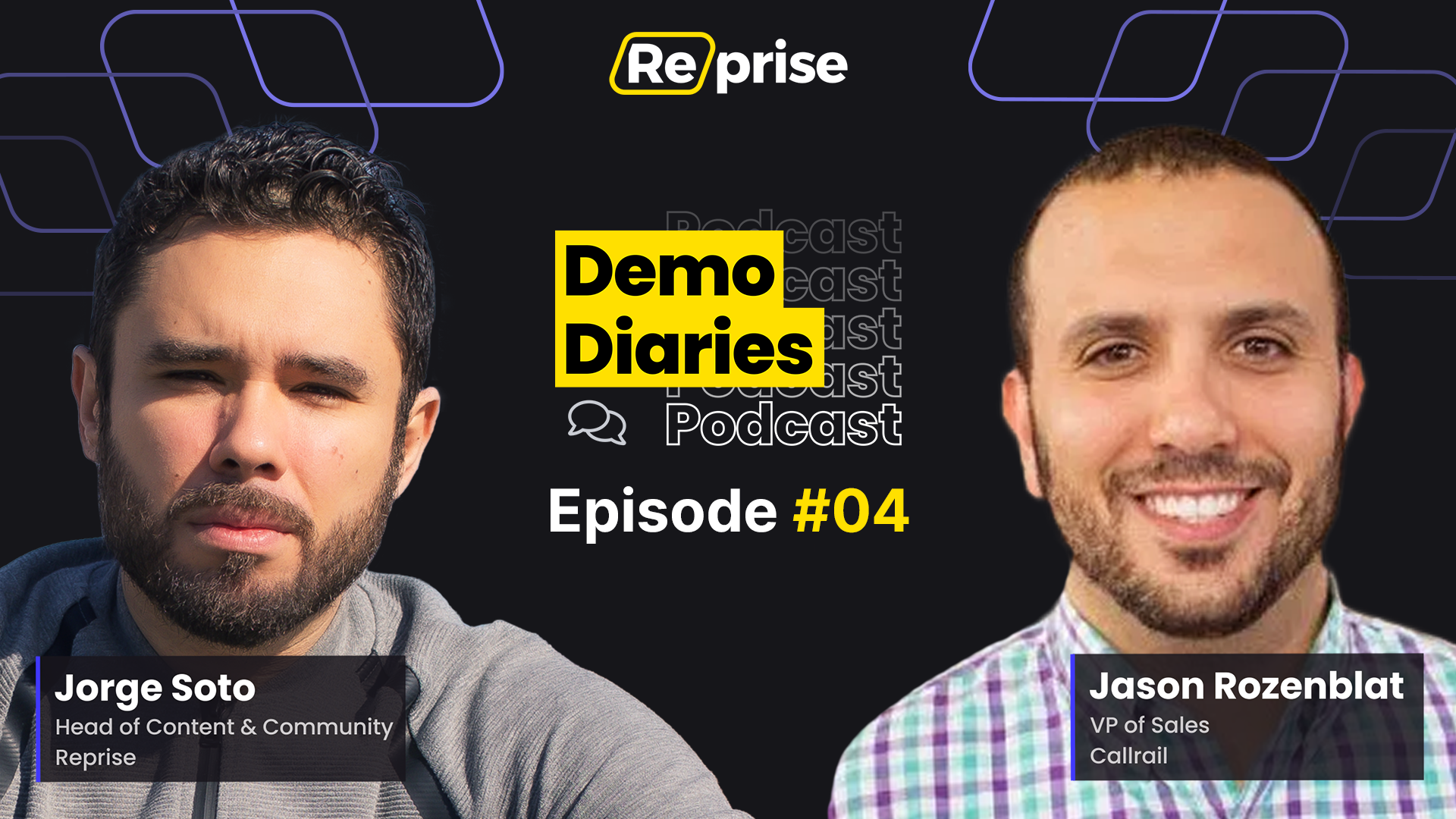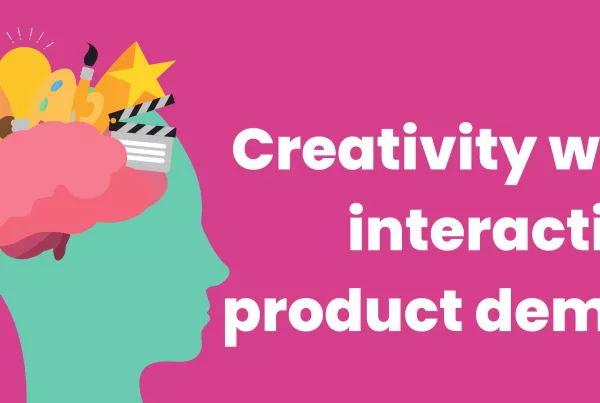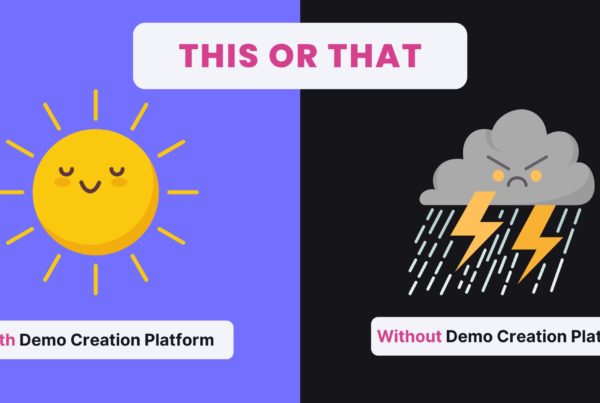I’m back recapping the highlights of another incredible Demo Diaries podcast.
I was joined by Jason Rozenblat, Vice President of Sales at CallRail, for a super-insightful conversation about what creating demos is like at small start-ups and big companies. Plus he drops some serious demo and sales knowledge (and a lot of Reprise love) you need to hear.
Meet Jason
Jason has been in sales and business development throughout his whole career. He started with Enterprise Rent-a-Car’s management training program and went on to found his first start-up 15 years ago.
He’s lived all over the country since then, working at high-growth tech companies from the seed stage to being publicly traded, so he’s experienced every size of company out there.
Start-Ups vs. Big Companies
While every size of software company needs to have a demo, creating them is quite different when you’re at a new start-up versus an established company.
At start-ups, you need to be scrappy and resourceful. You have to figure out how to do things on your own – maybe you’re showing real client accounts or slapping together slides that tell a story. Or you’re asking marketing or product to help you create a basic demo. It’s all about finding the least-bad option at the time, and it’s a hodgepodge of ideas and resources coming together. It’s all happening on your schedule and your timeline – you can make things happen as quickly as you need them.
At bigger companies, on the other hand, you have more resources – you might even have a dedicated person to create your demos. But now your demo creation is on their timeline, and they have other projects to work on too. So your timeline is in someone else’s hands, and that can feel painful. Plus you need to ensure everything is legally compliant before you show anything to prospects, which is another step that can slow you down.
Demo Best Practices
Start by creating an outline of the demo that’s easy to follow – almost like writing a recipe for baking a cake. You can train reps on this outline, so create it with that in mind. Jason loves creating certifications on the demo too so leadership feels confident reps are doing everything the right way. And a feedback loop where you capture how reps are performing by using software like Gong and offer coaching helps improve performance.
New things get thrown into this process all the time, like new features, so make sure your training process is agile enough to deal with those changes.
Supporting Soft Skills
Demos shouldn’t sound like a script, no matter the size of your company. Adding open-ended questions (not the dreaded “does this make sense?”) to the training outline can give reps ideas for how to get into a good conversation. Roleplay and deliberate practice as part of ongoing coaching help with this process. Giving reps creative freedom to script their demos is key too – nothing is one-size-fits-all since you never know what curveballs a prospect will throw at a rep.
Jason also is a fan of creating a library of really great demos. These aren’t examples from leaders, but recorded real calls from reps with real responses from prospects. It’s an amazing resource, especially for newer reps, but experienced ones benefit as well.
Demoing successfully means not treating every call or prospect the same way. It’s no longer a sales cycle or process – it’s a buyer’s process. You and your team must understand how buyers want to buy and the problems they’re trying to solve and align with them. Most sales organizations do a terrible job of this, according to Jason.
Top Tip
You should be demoing so you see what reps and prospects are dealing with. Get into the trenches – understand what’s happening, even if it’s painful. Pain makes you take action to actually make the process better. It’s all about the buyer – if they’re not intrigued and excited, your demos aren’t working and you’re not going to grow at the rate you want.
Watch the complete episode here:






